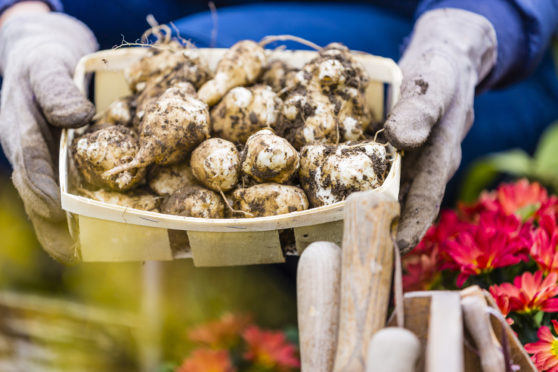
By now you may be enjoying the first, delicious tastes of early summer and looking forward to more to come, but there’s still lots to be done, including weeding and watering during dry spells.
If you’ve got an asparagus bed then you are fortunate indeed as nothing tastes better than a handful of spears, plucked fresh from the ground, cooked briefly then smothered in butter.
It takes two to three years from planting asparagus crowns until you can enjoy your first harvest but it is definitely worth the wait.
Globe artichokes are another perennial vegetable that it’s worth making space for, even amongst the flowers where their handsome foliage doesn’t look out of place. You can grow artichokes from seed but don’t take a crop in the first year. Instead, cut off the heads to encourage stronger roots. To have any success, however, you will need to give them a sunny space in the garden and well-drained soil, there is nothing that globe artichokes like less than clay around their roots.
Jerusalem artichokes, on the other hand, will grow just about anywhere. These are a completely different plant from globe artichokes and here it is the knobbly roots that are eaten where, boiled, baked or roasted they make a tasty alternative to potatoes.
Plant them in early spring, earth up the base of the stems as they grow and feed with liquid fertiliser during the summer. Cut down the stems when the leaves turn brown and start lifting the tubers in autumn.
Beetroot can be sown outdoors until the end of July so there’s time to raise a decent crop, spacing them wide apart if you want large roots and closer together for smaller roots, and the young leaves make a lively addition to salads. Sparrows find them irresistible, so you may need to cover them if this becomes a problem.
And courgettes raised in modules should be planted out from the end of the month into soil that’s been enriched with compost or manure. Keep them well-watered, protect them from slugs and remove side shoots from the base of the stem in order to keep up a supply of young, tender fruits.
The long, dry spell that lasted from April to May has resulted in dry soil in many areas and subsequent rainfall may have failed to penetrate to root-level, so check for moisture levels and water if necessary, topping up with mulch to keep roots from drying out.

Enjoy the convenience of having The Sunday Post delivered as a digital ePaper straight to your smartphone, tablet or computer.
Subscribe for only £5.49 a month and enjoy all the benefits of the printed paper as a digital replica.
Subscribe